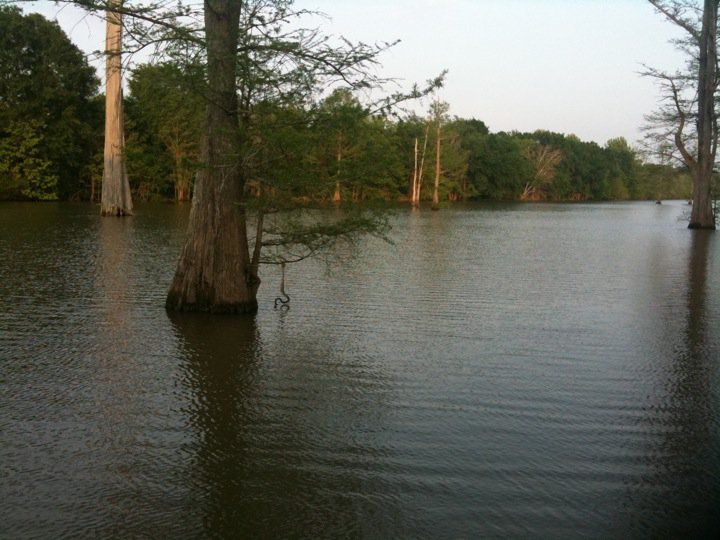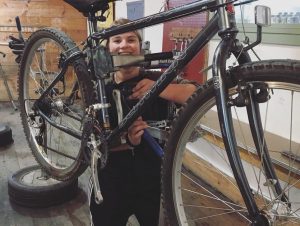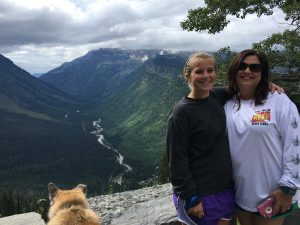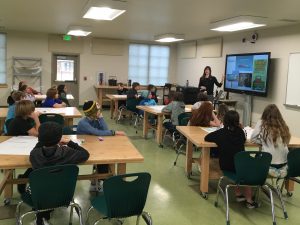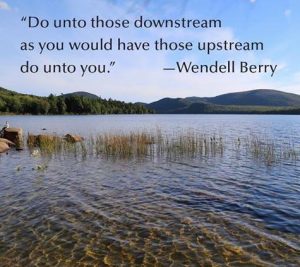By Claire Marshall
Growing up on the Bayou, I never understood why people wanted to be inside. The area between the four corners that composed my house was made of walls and doors and objects whose purpose is to confine space and materials. If you stepped out the backdoor, muddy, coffee colored water waited for me to explore it. In my little tin boat, alongside my dog who was just as curious, if not more curious than me, I traveled up and down the river, stopping only to ask a fisherman what he had caught. Out my front door more adventures awaited, with a field of cows mooing, deer jumping, and Northern Cardinals singing, all within reach. I would spend hours riding four-wheelers through the countryside, sitting in the deer stand with my grandpa, laughing when he got mad at the raccoons and squirrels for eating the deer feed. All the while I was thinking to myself, there was nowhere else in the world I would rather be than in the middle of land where walls and doors are replaced by rising oaks and roaring rivers, and confinement is replaced by freedom.
While it was during my childhood that I developed a love for the world around me, it was not until my college career that I developed an overwhelming desire to protect it. When I was a sophomore, I moved to Missoula to attend an exchange program at the University of Montana for one semester. It was during this program that the idea of sustainability and conservation became incorporated into my daily vocabulary. Regular weeks consisted of classroom visits to superfund projects, private ranches, and community farms, where I learned 1) How humans have interacted with the environment and the impact they have on our natural resources, and 2) How individuals, groups, and entire communities connect to restore the integrity of our land and to change that impact in a positive, sustainable way.
Three years ago I left Montana, but Montana did not ever leave me. Taking with me all of the lessons I learned during my time in Missoula, I returned to the Bayou state, teaching my friends, family, and anyone who would listen to me about various messages of conservation. Living in a state where the recycling rate is 6.3%, you get a funny reaction when you ask if there is a recycling bin at the local grocery store. Louisiana has some of the poorest water quality of all of the states, and some of the highest energy use per capita. Introducing conservation practices in Louisiana is like starting from scratch… but what I have come to find out is, a scratch can make and move mountains if enough people with a common goal work together to make their scratch count.
During my final semester of college, through the teachings of an incredible professor by the name of William J. Platt, III, whose messages will continue to inspire me throughout the rest of my life, I was introduced to the science behind climate change. I learned about the Keeling Curve, which shows the steady increase of carbon dioxide concentration in our atmosphere since the 1950’s. I learned about storm intensity and frequency high on the rise. I learned about rising temperatures and its effect on biodiversity. I learned about melting ice caps and rising sea levels, and how the city where I am from, my home, is destined to be underwater if we do not do anything to reverse the rate at which our climate is changing. I learned about the role gasoline and diesel combustion have in all of the aforementioned topics.
In order to make an impact worth noting, the message of what it is that is being impacted, and how it is being impacted, is a critical one to share. Three years later, I have come back to Montana, to share this message, and messages of what we can ALL do, actions we can all take, as individuals, to contribute to restoring the integrity of our planet and to protecting its natural habitats. I am now serving an AmeriCorps Energy Corps term with Bike Walk Montana, and building upon their Education programming through various projects such as Bicycle Rodeos and Walking School Buses. Through empowering the community to walk and bicycle, positively influencing community health and well-being, clean transportation advocates are also clearing the streets of harmful emissions, improving local air quality, and preventing the use of non-renewable resources.
More walking and bicycling in one community means more walking and bicycling in neighboring communities. A build-up of these clean transportation habits means cleaner air. Cleaner air means less greenhouse gasses accrued. Less greenhouse gasses accrued means temperature balance. Temperature balance means ecosystem stability. Ecosystem stability means restored habitats. Restored habitats means sanctuary for all of the incredible biodiversity that this planet gives rise to. It means my neighbor on the bayou catches more fish. It means my grandpa sees more deer, or to his disdain, raccoons and squirrels.
It means the city where my roots will always be planted will remain above water. It means my great grandchildren will get to visit New Orleans and dip powdery, fluffy beignets in a milky Cafe Au Lait after hopping off the street car, or maybe if I did my job well enough, a bicycle. And if there is anything I have learned thus far in my 23 years of life, it is that the job that is done with heart, is always going to be a job done well.

